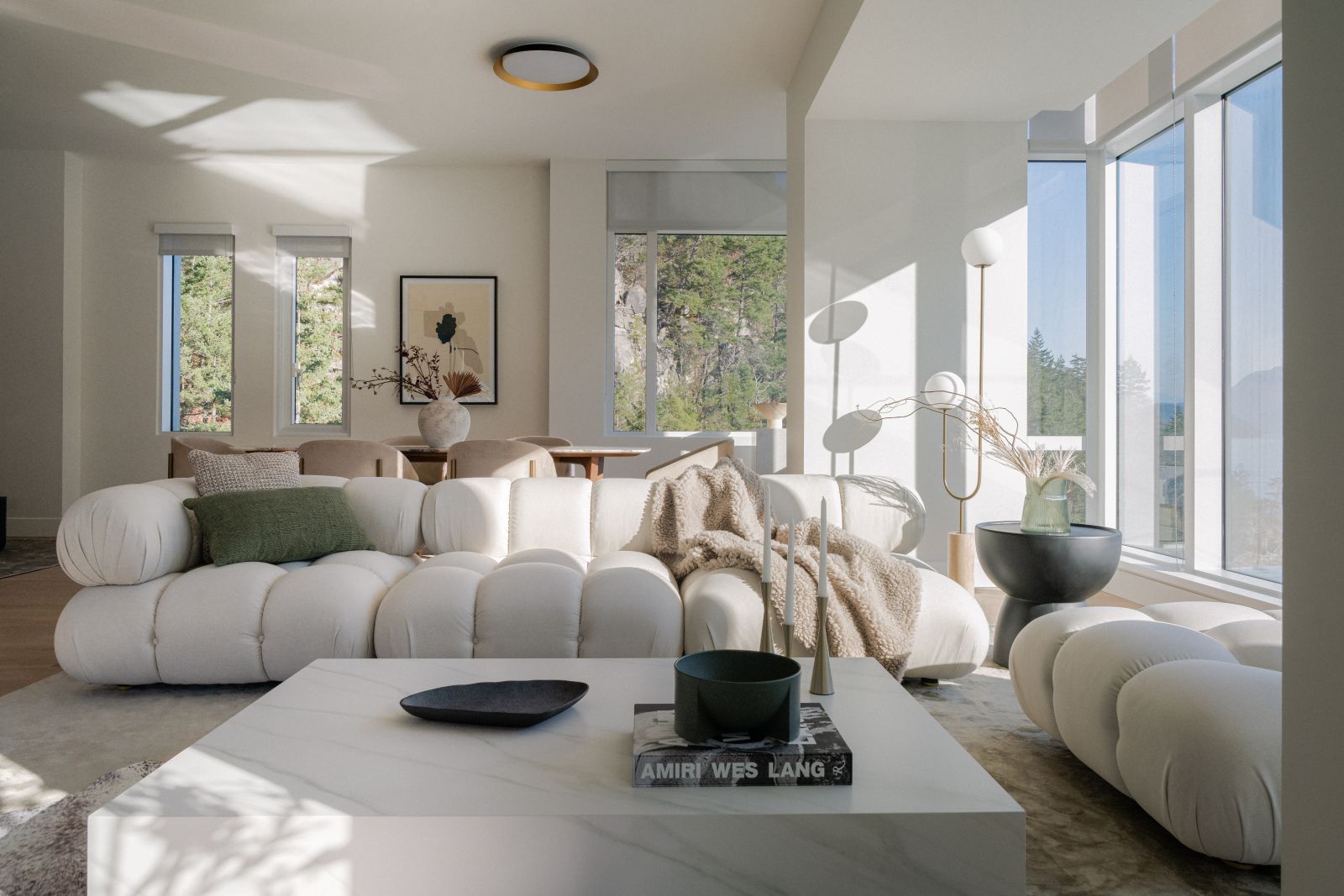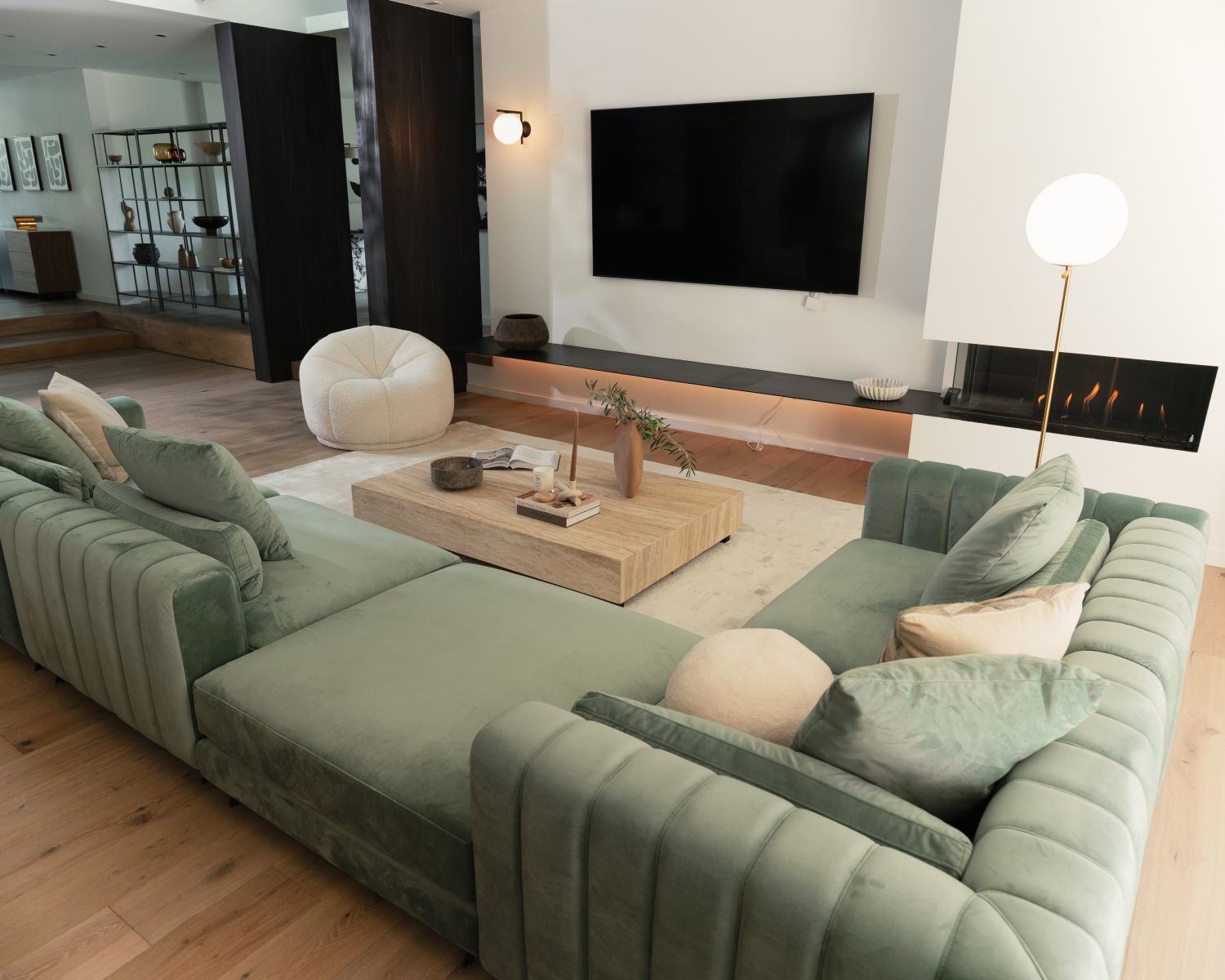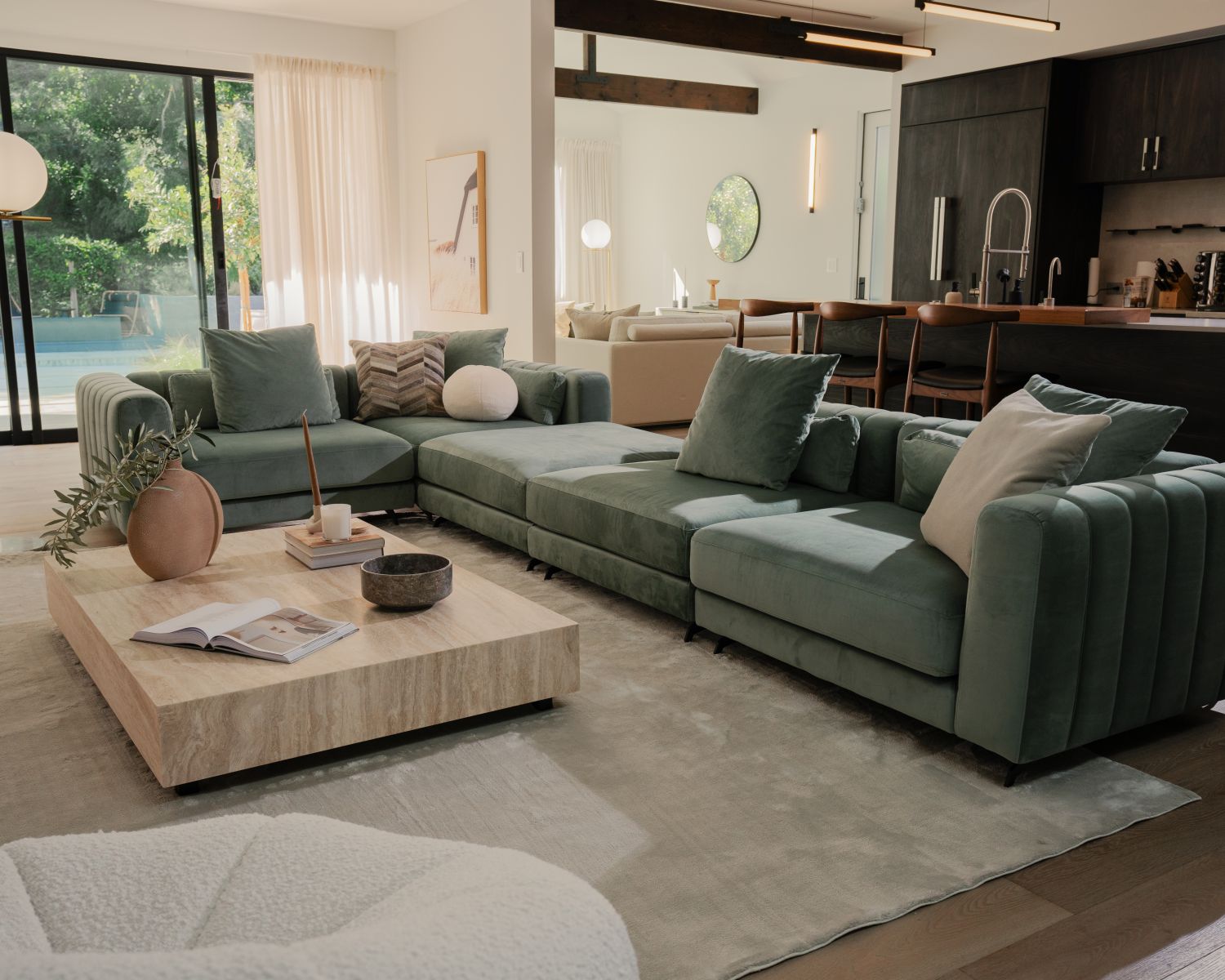The world of furniture is vast and diverse, offering a myriad of options for both aesthetics and functionality. Among these options, one particular piece stands out for its versatility and adaptability - the sectional sofa. Sectional sofas are modular, meaning they consist of multiple pieces that can be arranged in many different ways to suit your space and your needs.
I love sectional sofas because they are a perfect blend of style and function. Whether you have a large family, frequently host guests, or simply enjoy sprawling out when you watch TV, a sectional sofa could be a great choice for you. Sectional sofas can often be customized to fit your specific space and style. They can be as unique and individual as you are, and that's a part of their charm.
In this blog, I am going to dive deep into the world of sectional sofas. From why you should choose a sectional sofa, to the different types available, how to connect them effectively, common challenges and solutions, maintenance tips, and even where to buy them. So, sit back, relax (preferably on a comfy sofa), and let's get started.

Why Choose a Sectional Sofa?
There are many reasons you might opt for a sectional sofa over a traditional one. Firstly, they offer flexibility. With a sectional, you can rearrange the pieces to suit your needs. This is particularly useful if you frequently move or like to change up your space.
Secondly, they are great for maximizing seating. A sectional sofa can often accommodate more people than a traditional sofa, making it an excellent choice for large families or those who love to entertain. Plus, with all the different components, everyone can find their perfect spot.
Lastly, they can help define a space. In open-plan living areas, a sectional sofa can act as a sort of 'room within a room', creating a cozy and inviting area. In essence, with a sectional sofa, you get a customizable, comfortable, and stylish piece of furniture that can adapt to your changing needs.
Different Types of Sectional Sofas
Just as there are many reasons to choose a sectional sofa, there are also many different types to choose from. The most common types include the L-shape, U-shape, pit, and modular. Each type has its own unique features and benefits.
An L-shaped sectional is probably the most popular type. It consists of two pieces that form a right angle, making it perfect for fitting into corners. A U-shaped sectional, on the other hand, is larger and consists of three pieces that form a U shape. This type is great for large spaces and encourages conversation by allowing everyone to face each other.
A pit sectional is similar to a U-shaped sectional but is usually larger and has additional components like ottomans or chaises. This type is perfect for lounging and can even double as a guest bed. Lastly, a modular sectional is the most flexible type. It consists of multiple pieces that can be arranged in any way you like, making it the ultimate customizable sofa.

Tools Needed to Connect Your Sectional Sofa
Before you can start enjoying your sectional sofa, you need to connect the pieces together. This is usually a straightforward process, but you will need some tools. The most common tools needed are a drill, screws, and brackets.
A drill is used to create holes in the sofa frames where the brackets will be attached. Screws are used to secure the brackets in place. The brackets themselves are what hold the sofa pieces together. Some sectional sofas come with pre-drilled holes and included brackets and screws, making the process even easier.
It's also a good idea to have a measuring tape on hand. This will help you ensure that you're attaching the pieces in the right spots and that everything is lined up correctly. Finally, a level can be useful to make sure your sofa is perfectly straight and even.
Step-by-Step Guide to Effectively Connect Your Sectional Sofa
Now that you have your tools ready, it's time to connect your sectional sofa. This process will vary slightly depending on the type of sectional you have, but here is a general step-by-step guide.
First, decide on the arrangement of your sectional. Consider the size and shape of your room, where you want the focal point to be, and how you'll be using the sofa. Once you've decided on the arrangement, measure and mark where each piece will go.
Next, attach the brackets to the sofa pieces. Use your drill to create holes in the frame, then secure the brackets with screws. Make sure the brackets are positioned so that they will align when the pieces are put together.
Once the brackets are attached, you can start connecting the pieces. Align the brackets and slide them together. Some brackets will have a mechanism that locks them in place, while others will need to be secured with additional screws.
After all the pieces are connected, check that the sofa is leveled and adjust as necessary. Now you're ready to enjoy your new sectional sofa!
Common Challenges and Solutions When Connecting Your Sectional Sofa
While connecting your sectional sofa is usually straightforward, there can be some challenges. One common issue is misalignment of the brackets. This can occur if the holes were not drilled correctly or if the sofa pieces moved while you were attaching the brackets. If this happens, you may need to re-drill the holes and reposition the brackets.
Another common challenge is a wobbly or uneven sofa. This can be caused by uneven floors or by not securely attaching the brackets. You can fix this by adjusting the brackets or by using furniture pads or shims to stabilize the sofa.
Lastly, you may find that your sectional pieces slide apart when sitting or moving on the sofa. This is often due to a lack of grip between the sofa and the floor. This can be remedied by using a non-slip pad or rug under the sofa.
Tips for Maintaining and Caring for Your Sectional Sofa
Once your sectional sofa is connected and in place, you'll want to keep it looking and feeling great. Regular maintenance and care are key to prolonging the life of your sofa.
Firstly, regular vacuuming is important to remove dust and crumbs that can build up on and between the cushions. If your sofa has removable and washable covers, take advantage of this feature. If not, spot cleaning with a mild detergent can help to remove stains and spills.
Secondly, rotate and flip the cushions regularly. This can help to prevent uneven wear and tear and keep your sofa looking fresh. Also, plump the cushions regularly to maintain their shape and comfort.
Lastly, avoid exposing your sofa to direct sunlight for prolonged periods as this can cause the fabric to fade. If possible, position your sofa away from windows or use curtains or blinds to protect it from the sun.

Are Sectional Sofas a Good Fit for Your Space?
Before you rush out to buy a sectional sofa, it's important to consider whether it's the right fit for your space. Sectional sofas are great for maximizing seating and can help to define a space, but they also take up more room than a traditional sofa.
Consider the size and layout of your room. If you have a large open-plan living area, a U-shaped or pit sectional could work well. If your space is smaller or has an awkward layout, an L-shaped or modular sectional might be a better choice.
Also, think about how you'll be using the sofa. If you frequently host large gatherings, a sectional sofa could be a great choice. If it's just you and a partner, a traditional sofa might suffice.
Where to Buy High-Quality Sectional Sofas
There are many places to buy sectional sofas, both online and in stores. When choosing where to buy, consider factors like the range of options available, the quality of the sofas, the price, and the customer service.
Online retailers like Rove Concepts offer a wide range of sectional sofas in various styles, sizes, and price points. They often have detailed product descriptions and customer reviews, which can help you make an informed decision.
Conclusion
Sectional sofas offer a versatile and comfortable seating solution for any space. With many different types to choose from and the ability to customize the arrangement, you're sure to find a sectional sofa that suits your needs and style. While connecting the pieces may present some challenges, with the right tools and a bit of patience, you can create a comfortable and stylish seating area. Remember to take care of your sofa with regular cleaning and maintenance, and it will serve you well for many years to come.
Written by individual contributors and
curated by Rove Concepts Team